
|

|
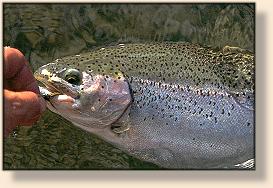 It should be remembered, however, that Crane Prairie teemed
with big fish long before it became a lake. Furthermore, much
of today's catch are wild trout directly descended from the
original inhabitants. Rainbow trout and whitefish are the primary
indigenous species still present. Stocked rainbows are added,
but the majority of the catch is wild and spawns in the Deschutes
between Crane Prairie and its source at Little Lava Lake. In
addition to the rainbows, brook trout have been added from
time to time. Although not native to the region, they reproduce
naturally and most of them can be considered wild, if not native.
It should be remembered, however, that Crane Prairie teemed
with big fish long before it became a lake. Furthermore, much
of today's catch are wild trout directly descended from the
original inhabitants. Rainbow trout and whitefish are the primary
indigenous species still present. Stocked rainbows are added,
but the majority of the catch is wild and spawns in the Deschutes
between Crane Prairie and its source at Little Lava Lake. In
addition to the rainbows, brook trout have been added from
time to time. Although not native to the region, they reproduce
naturally and most of them can be considered wild, if not native.
Fish
|
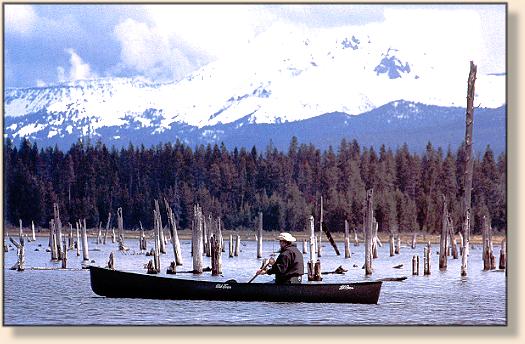
Rainbow Trout
Regardless of their origin, all rainbows grow big
and fat in a short time on Crane Prairie's abundant
forage. Fish of five pounds are commonplace. Many
are at least seven pounds, and some are even bigger.
While trout over ten pounds have not been uncommon
in the past, recently the average size has declined
so that fish over seven pounds are rare.
Largemouth Bass
Other Species
|

Both brook trout and rainbows come up from Crane
Prairie, but they are smaller than the fish you'll
find in the lake. The exception is spring and fall,
when rainbows and brooks, respectively, enter the
stream to spawn. Fortunately, the only season for this
stretch of the Deschutes runs only from June 1
through August 31.
When the Deschutes escapes from Crane Prairie Dam,
the waters of five other rivers and creeks have
been added to it. There is no longer any confusion
about whether it is a creek or a river. Broad and
deep, it tumbles down a series of steep drops, then
passes under the bridge on road 42. The bridge is
the dividing point: upstream the river is steep and
not fishable; downstream it is quiet and offers
excellent fishing.
It is late summer when this part of the Deschutes
comes into its own. Big brown trout move up from
Wickiup Reservoir preparatory to fall spawning.
They can be caught on flies, and big streamers are
the best tactic. Enjoy the fishing while you can:
it's over at the end of August since this section
has the same season as the stretch above Crane
Prairie - June 1 through August 31.
|
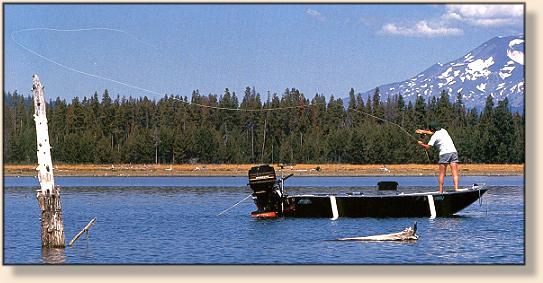
For a MAP of the Crane Prairie, Dechutes Headwaters, click
here.
Credits: From Crane Prairie, Dechutes Headwaters, part of the River
Journal series, published by Frank Amato Publications.
We greatly appreciate use permission.
|
[ HOME ]
[ Search ] [ Contact FAOL ] [ Media Kit ]
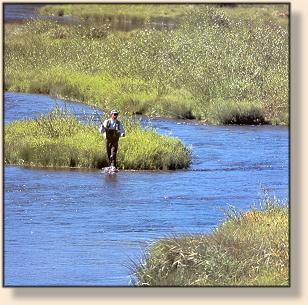
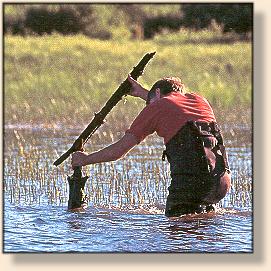 Brook Trout
Brook Trout

